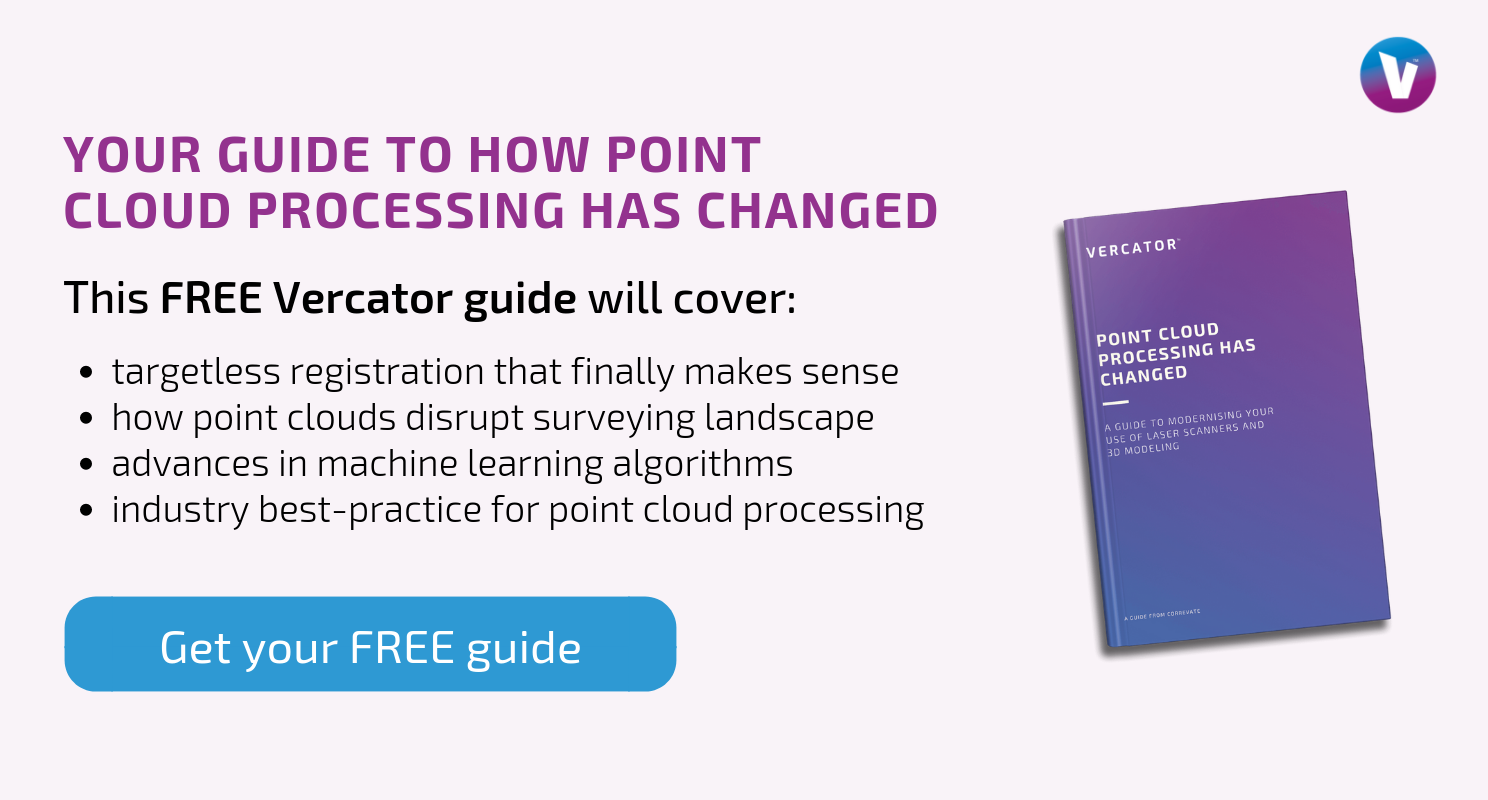Is robust 3D point cloud registration without targets possible?

The short answer is yes. Robust point cloud registration without the use of artificial targets is possible — you simply need the right software. Although there are challenges accounting for distortions caused by movement with the scan field, targetless data can be registered using far more points of comparison than data aligned by 3-4 artificial targets. Particularly in scenes that include the stable intersection of straight lines, composite images can be created by comparing millions of overlapping points on ‘locked’ x, y, and z axes.
The better question is if 3D point cloud registration without targets is cost-effective or simple? Historically, the answer to that question has been no. That, however, has changed. New approaches to processing automation have made robust targetless registration of point clouds not only possible, but relatively easy, simple and affordable.
The challenge of targetless registration
The problem that has always plagued conventional targetless registration is processing time. Targetless registration is achieved by looking at detailed scene information captured in scan data to find similarities to overlay, allowing scan alignment and registration. Traditionally, this requires about 60% overlap across adjacent scans. However, it is readily achievable given a willingness to undertake complex processing procedures.
This complexity of processing is the problem. It takes processing software far longer to register and align scans using a cloud-to-cloud comparison method than by identifying and aligning artificial targets placed within the scan field.
This issue of increased processing time is exacerbated by the increase in manual procedures required when processing data that has been scanned without targets. It is essential for operators to set scan parameters, remove areas of the scan data that have been corrupted by movement, and identify zones of overlap to speed up processing. The need to be manually involved throughout this procedure eradicates most efficiencies gained in avoiding artificial target placement — sometimes increasing the aggregate amount of time it takes to generate a point cloud.
Targetless registration enabled by vectors
A novel use of vectors are enabling a smarter approach to targetless registration. Rather than looking to assess all of the data points independently, a new breed of processing software has decreased the time spent processing and automated procedures by breaking apart the registration process into three stages.
Point clouds are first subjected to a rotational alignment. In order to achieve this, the positional data of a scanner is used to extrapolate each ‘point’ into a vector. Each vector can then be lifted from its original context and the entire point cloud collapsed into a single point — making a ‘vector sphere’. The identity of that scan is retained through the unique density and directional characteristics of the vectors branching off from that single point.
This method of viewing point clouds allows them to be subject to rapid rotational alignment with adjacent scans by overlaying the spheres and pairing similarities. This spherical analysis then allows for 2D point density alignments on the horizontal and vertical axes. This multi-stage process significantly improves the speed at which scans can be aligned and reduces the need to set parameters for scan comparison. Not only can scans be processed faster, they can be queued up for hands-off processing — greatly improving the efficiency of generating point clouds through the use of targetless registration.
Summary: Software advances have not only allowed for robust targetless registration, they have made it simple
The long-standing challenge for targetless registration has not been the possibility of a robust outcome but the efficiency of the process. The complexity and manual procedures involved in producing robust targetless registration has often outweighed any benefits of avoiding the use of artificial targets in the field.
Software advancements have now made it possible to process point clouds for cloud-to-cloud alignment and registration quickly. More critically, the number of manual procedures has been reduced, allowing scans to be queued for hands-off processing — greatly increasing efficiency.
Improved software capabilities have also decreased the distorting impact of movement within a scan field on alignment. Under all but the most challenging circumstances, targets are no longer needed to secure robust point cloud data. This might include scanning an open field on a windy day, for example. However, robust outcomes are easily achievable wherever any stationary features exist to use as a focal point for registration.
Artificial environments, particularly, generally contain a large number of intersecting straight lines. This type of environment is particularly conducive to targetless registration. These intersections ‘lock’ scans on the x, y and z axes, providing millions of points of comparison for the creation of the composite image. These types of outcomes have been achievable for some time. Now, however, they are achievable with relative ease, simplicity and at cost savings.
Tags: point clouds

